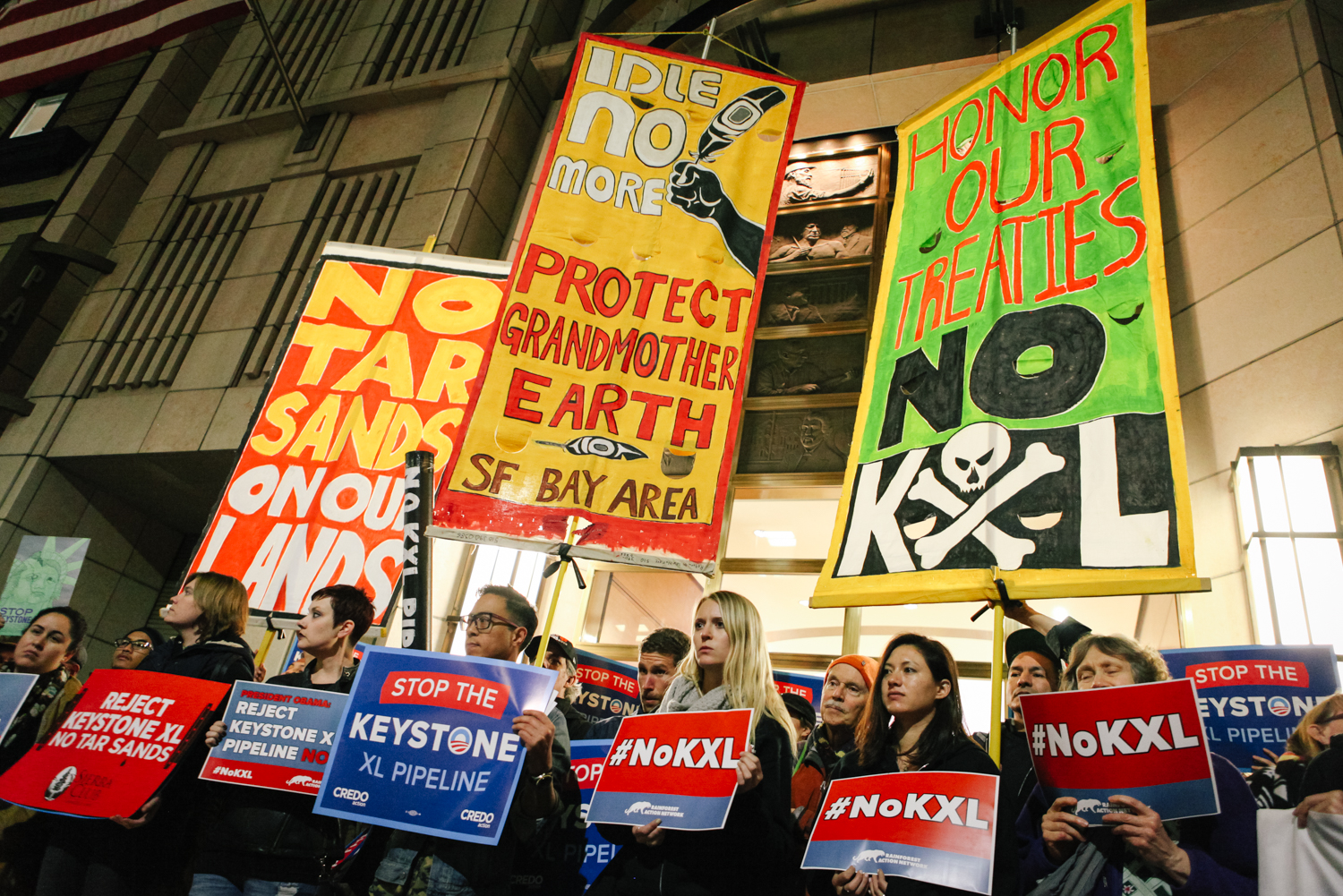This blog was originally published as a case study in Banking on Climate Change: Fossil Fuel Finance Report Card 2017, by RAN, BankTrack, Sierra Club, and Oil Change International, in partnership with 28 organizations around the world. Thank you to our many partners who contributed to and reviewed this case study. For a full list of partners, visit www.ran.org/bankingonclimatechange.
The Keystone XL pipeline is back — but so is the people power that fought to stop it the first time.
Keystone XL (KXL) is the infamous northern leg of Canadian oil giant TransCanada’s Keystone pipeline system, which would bring up to 830,000 barrels of tar sands oil per day from Alberta, Canada, to Steele City, Nebraska. The 1,179 mile pipeline would then connect to existing pipelines and bring the tar sands oil to the U.S. Gulf Coast for refining and export. KXL has been opposed by Tribal nations and ranchers since 2008 when TransCanada first applied for a permit. Over the next seven years, creative, widespread, and dogged public opposition mounted against this pipeline: nearly 100,000 people pledged to risk arrest, tens of thousands rallied in Washington, D.C., and scores blockaded the construction of KXL’s southern route through Texas and Oklahoma.
Former NASA climate scientist and Columbia University professor James Hansen called Keystone XL the “fuse to the biggest carbon bomb on the planet,” referring to the Canadian tar sands lying beneath the world’s largest boreal forest. President Obama cited climate change concerns in November 2015, when he rejected TransCanada’s first bid to build KXL. On March 24, 2017, the Trump administration reversed course and granted the permit for KXL. However, while the pro-fossil administration can change federal policy, it can’t change climate science.
This time around, after the heated criticism banks received for financing the Dakota Access Pipeline, any banks associated with KXL or TransCanada face even greater reputational risk than before. KXL would cross through tribal lands and sacred sites, as well as ranches and farms, and TransCanada has failed to secure consent from tribes along the route and the communities that stand to lose their source of drinking water. For instance, KXL would cut through the land of the Rosebud Sioux of South Dakota, whose president Cyril Scott said in 2014, “Authorizing Keystone XL is an act of war against our people.” On the Canadian side of the border, First Nations hold the right to give consent for development that will affect their lands and livelihoods, given the environmental impacts of pipeline construction and tar sand extraction.
It is yet to be determined whether TransCanada will seek project-specific financing to construct KXL. In the absence of direct project finance, it is the 21 banks on TransCanada’s revolving credit facilities that are, effectively, the funders of Keystone XL. Of the banks analyzed in this report, Bank of America, Bank of Montreal, Barclays, Canadian and Imperial Bank of Commerce (CIBC), Citi, Crédit Agricole, Credit Suisse, Deutsche Bank, HSBC, JPMorgan Chase, Mitsubishi UFJ Financial Group (MUFG), Mizuho, RBC, Scotiabank, SMFG, TD, and Wells Fargo all participate in multi-billion dollar lines of credit to TransCanada.1
Any financial institution involved in financing KXL or TransCanada faces a potential public relations disaster and substantial market risk: for example, less than two weeks after Trump approved the federal KXL permit, the Seattle City Council voted unanimously that it would not contract with any banks that finance TransCanada. A bank that facilitates Keystone XL has no grounds to call itself socially responsible or to claim it is committed to upholding Indigenous rights.
Notes:
-
Bloomberg Professional Services.
For more on the banks behind TransCanada, visit www.ran.org/whos_banking_transcanada.

